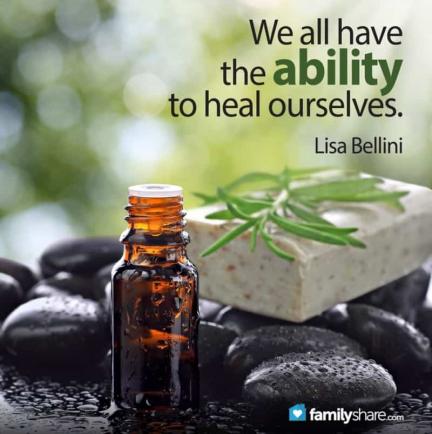
Essential oils have been gaining in popularity - and for good reason. Not only can they help boost mood, but they can also be a great addition to your medicine cabinet.
What are essential oils?
Super Mom EO says that essential oils are the aromatic liquid that is extracted from the leaves, stems, flowers or other parts of a plant. They are highly concentrated, which makes them 50 to 70 times more powerful than herbs.
Essential oils have complex constituents that make them beneficial. They kill bacteria and viruses. Many are anti-fungal as well. Depending on the oil, they can soothe pain, lift moods, settle your stomach and more.
How do you buy essential oils?
Not all essential oils are created equal. It is important that you buy only pure therapeutic grade essential oils. Carefully research the oils you want to buy. Here are some things to look for.
Does it list the botanical or scientific name of the plant?
Different varieties of the same plant can have completely different chemical compositions, but still smell the same. The botanical name of the plant will let you know if it is the best quality for essential oil use.
Where are the plants harvested?
Soil and weather conditions affect the quality of the plants that are harvested, and therefore, the quality of the essential oil. The best essential oils come from indigenous plants - meaning the plants are native to that area of the world. For example, lavender essential oil grown in France would be better than that harvested in the United States.
How is the essential oil extracted?
Anything other than steam distillation will leave a chemical residue and is not considered pure therapeutic grade.
Are the oils tested for quality and purity?
Testing by Gas Chromatography and Mass Spectroscopy can help to verify that the essential oil has the constituents that it should - and none of the impurities that it shouldn't.
Are they too cheap to be true?
With essential oils, the adage "You get what you pay for" is true. It takes a lot of plant material to get a little bit of pure essential oil. For example, it takes 5,000 pounds of rose petals to make one pound of rose essential oil. To lower prices, many companies will add a carrier oil to their essential oil. This dilutes its effectiveness. Also, AromaWeb.com points out that knowledgeable vendors will spend a lot of time to locate good quality oils and pay the expensive fees for testing. Do not let the price of an essential oil dissuade you from trying it. Remember, you are actually buying in bulk. A small 15 ml size bottle contains approximately 270 drops, or doses, of essential oils.
How do you use essential oils?
Essential oils can be used three ways.
Aromatically
You can use a diffuser to diffuse the essential oil into the air. You can also put a few drops in a spray bottle filled with water and spray the room. Another alternative is to simply inhale directly from the bottle. When used aromatically, essential oils can cleanse the air, enhance mood and open airways.
Topically
Add a drop of essential oil to a small amount of carrier oil such as coconut, almond or olive oil. Apply directly to the area of concern. Some essential oils can be applied "neat," meaning they can be used without a carrier oil. Always refer to the label and test for sensitivity first. When used topically, essential oils can boost immunity and give immediate comfort. They absorb quickly and pass into the blood stream for systemic as well as localized results.
Internally
A few essential oils can be taken internally. Be sure to check the label. An essential oil that is safe for internal use will have nutritional information. You may add a few drops to a capsule or put a drop directly onto your tongue. When taken internally, essential oils can detoxify the body, improve digestion and support internal organs.
How can essential oils help your family?
There is an essential oil for just about every ailment. Here are some of the ways my family uses essential oils.
Tummy problems
Peppermint, fennel and ginger are all good for digestive issues. Last year, I held Thanksgiving at my house. Of course, we all overate, and after dinner, my niece complained of a tummy ache. I had her put a little bit of a digestive blend of essential oils on her stomach. Within minutes, she felt better. Soon, I had children and adults alike lined up to try my "tummy oils."
Anxiety
My youngest son gets very excited before the first day of school. So excited, in fact, that he couldn't sleep at all the night before 3rd grade. Luckily, we had essential oils by the time he entered 4th grade. The night before school started, he put a little lavender essential oil behind his ears, and he was able to get a good night's rest.
Pink eye
One morning, my son came into my room with the ever-dreaded pink eye. I had him rub a drop of melaleuca (tea tree) essential oil around (but not in!) the eye that was bothering him. By that afternoon, the pink eye was gone completely. He was a little disappointed that he only got to miss one day of school.
Colds and flu
Oregano, orange and cinnamon are great anti-virals. Before essential oils, I used to dread that first cough or sneeze of the season. I knew it meant that the cold or flu would travel through my family for weeks of misery. Now, as soon as I notice my children getting sick, I have them rub a drop of a defense blend of essential oil on their feet. Their illness is much shorter and milder, and it doesn't pass on to the rest of the family.
Essential oils have so many wonderful uses, they can become an essential tool in your home.

